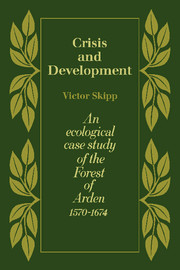Book contents
- Frontmatter
- Contents
- List of figures
- List of tables
- Acknowledgements
- PART ONE THE CONTEXT
- PART TWO THE CASE STUDY
- PART THREE IMPLICATIONS
- 12 General propositions
- 13 The ‘General European Crisis’
- 14 The Civil War alignment
- Appendix 1 The practice of birth control
- Appendix II Estimates of population size
- Notes
- Index
12 - General propositions
Published online by Cambridge University Press: 05 November 2011
- Frontmatter
- Contents
- List of figures
- List of tables
- Acknowledgements
- PART ONE THE CONTEXT
- PART TWO THE CASE STUDY
- PART THREE IMPLICATIONS
- 12 General propositions
- 13 The ‘General European Crisis’
- 14 The Civil War alignment
- Appendix 1 The practice of birth control
- Appendix II Estimates of population size
- Notes
- Index
Summary
From the demographic trough of the late fourteenth century, England's pre-industrial population growth seems to have taken place in two distinct phases. The first began in the late fifteenth century and culminated three generations later in the vicious, though relatively short, demographic cut-back of the 15 50s. The second coincided with the 2 5 year-long run of unusually favourable harvests which spanned the years 1566–93 (broken only in 1573 and 1587). But then, what Professor Hoskins has called ‘the Great Famine’ of the mid 1590s ushered in a period of the most profound demographic disturbance, which persisted for a full half century.
Some historians have interpreted this long, painful climacteric as a major Malthusian check caused by the cumulative pressure of the previous century's population growth on inadequate resources. However, as it stands, this interpretation raises certain difficulties. Firstly, in a straightforward Malthusian situation one would expect population growth to be halted and, indeed, the total to fall. But in fact neither of these things happened over the half century in question. On the contrary, although each decade from the 1590s to the 1640s brought years of serious food shortage and devastating epidemics, the national population total continued to grow steadily: perhaps increasing by a million between the 1590s and the 1630s – or in other words, by as much as 20%.
- Type
- Chapter
- Information
- Crisis and DevelopmentAn Ecological Case Study of the Forest of Arden 1570–1674, pp. 93 - 99Publisher: Cambridge University PressPrint publication year: 1978



